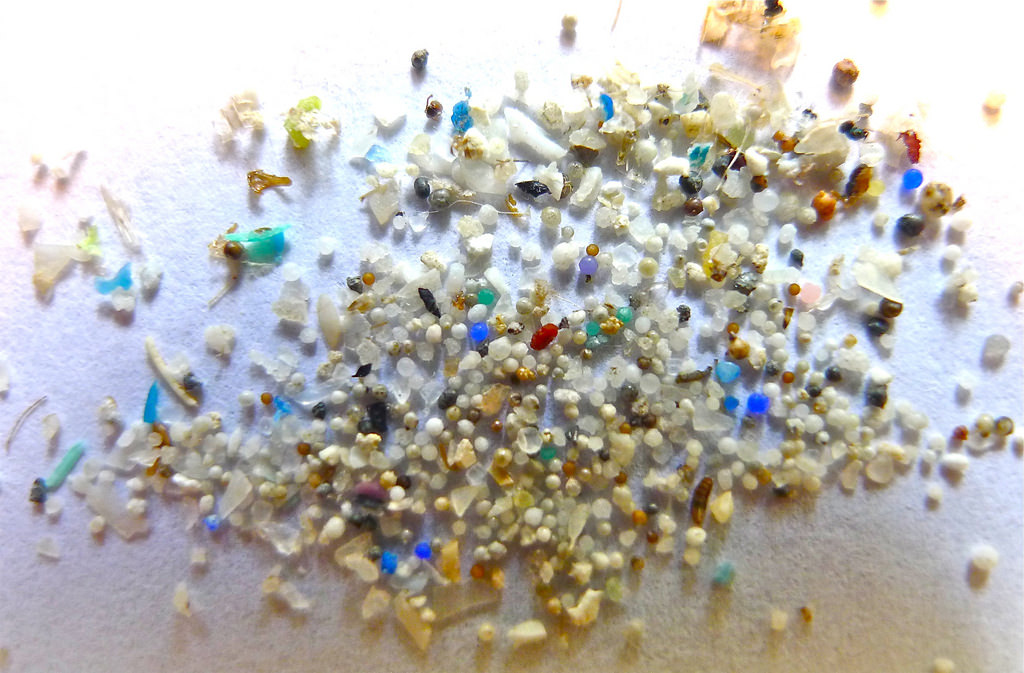
Plastic contaminating lake and beach sediment is an increasing Great Lakes concern.
By Lillian Young
Microplastic particles, typically studied as aquatic pollutants, are also common in coastal dunes on Great Lakes’ shorelines, according to a new study in the Journal of Great Lakes Research.
The situation is worse than researchers originally expected. Based on findings from the eastern shore of Lake Ontario and Lake Erie, microplastic pollution is frequently transported from shore to coastal land.
What does that mean for the coastal ecosystems?
Nothing good, the study suggested, highlighting that microplastics can obstruct animals’ digestive tracts and absorb, then trap, toxic chemicals.
The transfer of microplastics from lake to shore occurs because they’re generally less dense than water, the study said. This trait allows winds to move them easily to the shore.
Due to their high mobility, microplastics can travel long distances and disperse over a large area, according to researchers from the State University of New York at Oneonta.
The latest scientific confirmation of plastic particles on shores indicates that the problem of water-borne microplastics is increasingly serious, experts said.
Since people eat fish from the Great Lakes and animals from the coastal areas around them, toxins in the microplastics can move up in the food chain to humans.
According to Sarah Zack, a pollution prevention expert at Illinois-Indiana Sea Grant, scientists have found that the space plastic takes up in animals’ guts can cause damage that is sometimes irreversible.
“Aquatic organisms are impacted when they eat plastic instead of their normal food,” Zack said. She described how their growth, reproduction and survival can all suffer as a result of such pollution.
Without a healthy supply of fish in the Great Lakes, local economies could falter, she said. Microplastic pollution “has implications for economies and industries dependent on healthy fish populations, like fishing and tourism,” Zack said.
Microplastics are a “large-scale problem without many large-scale solutions,” according to Zack.
Concerns about microplastics in the Great Lakes aren’t limited to the U.S., said Kari Lydersen, a Chicago-based author and journalist who specializes in the environment.
In October, Lydersen wrote a piece for the Alliance for the Great Lakes describing the strange and relatively new threat that microplastics pose.
“Everyone really contributes to it through our lifestyles,” she said.
She described aquatic microplastic pollution in the water as a “shared problem” for the U.S. and Canada, given their similar ways of life and proximity to the Great Lakes.
The study from the “Journal of Great Lakes Research” confirmed Lydersen’s take, saying that tributaries to the Great Lakes serve as pathways for microplastics.
Zack agreed with Lydersen on the difficulty of stopping microplastic pollution due to their numerous sources like trash, disposable cutlery and wastewater from washing machines.
“Because the problem is so widespread and has so many different sources, how do you solve it? There have been some engineering innovations, but nothing on a large scale that I’m aware of,” Zack said.
“To me, at least right now, it comes down to making good choices and personal responsibility,” Zack said.
She said people can avoid single-use plastic and use a special wash bag when cleaning clothes made of materials that shed a lot of fibers, like fleece.
While individual responsibility is important, people shouldn’t feel “guilt” over small choices when most pollution comes from large companies, said Meghan Gass, a Michigan Sea Grant educator in the Saginaw Bay area who specializes in community resiliency and Great Lakes literacy.
Gass is working on a local scale to educate elementary school students about the importance of a clean environment through a program called “Plastics Float.” Students are encouraged to act locally as leaders to create a more sustainable community, doing things like convincing restaurant owners to hand out plastic straws only when customers ask for them.
She introduces the topic of microplastics to students early in their education so that by the time they graduate, they’re aware of how the choices they and their communities make impact the environment.
Editor’s note: A previous version of this article misspelled Sarah Zack’s name and stated that the space microplastics take up in animals’ guts “can cause irreversible damage.” It has been updated to reflect the correct spelling and level of certainty in the current science.